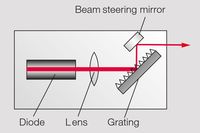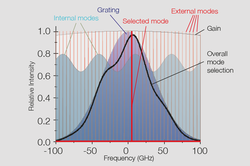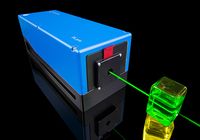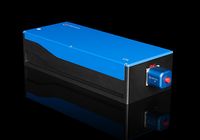Tunable Diode Lasers
Turning Laser Diodes into Tunable Diode Lasers
TOPTICA converts laser diodes into tunable diode lasers, meaning high-end laser tools, since 1995 – by integrating additional mode selection elements as well as adding best-in-class drivers and optics. The first commercially available tunable diode laser was TOPTICAs DL 100. It was extremely successful for many years and has finally been superseded by the much improved DL pro and CTL.
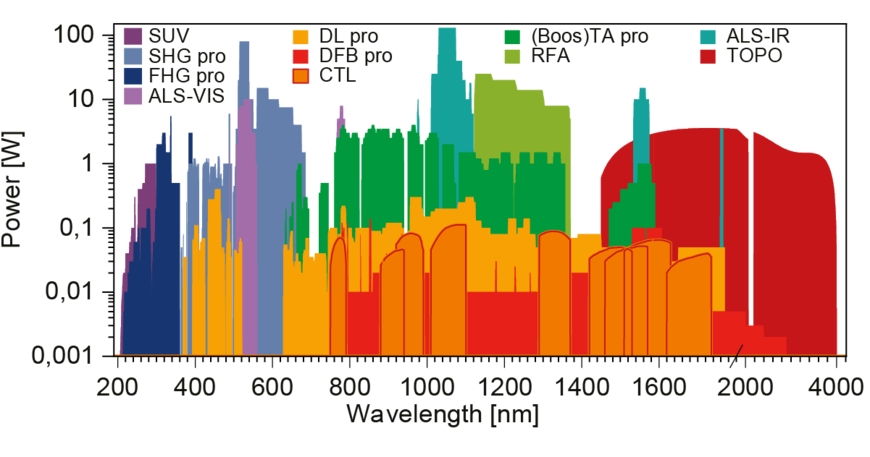
Laser Diodes
Laser diodes are well established subcomponents in a variety of consumer products, like laser pointers, barcode scanners, or CD/DVD/Blu-ray drives. Their success story is driven by the fact that they are compact, conveniently operated, cost effective, and highly efficient. However, the emission spectrum of bare laser diodes is broad, and the lasing wavelength is not well defined.
In general, the two facets of the laser diode form a resonator and determine the (longitudinal) lasing modes. The wide gain profile of the semiconductor supports many modes simultaneously, each with a different frequency. Even diodes with a single longitudinal mode exhibit mode-hopping upon slightest variations of the chip temperature or driver current. The result is an imperfect, spectrally unstable output beam.

Mode selection
Superior diode laser characteristics – like narrow emission linewidth, large coherence length, precise wavelength selection, and tuning or stabilization of the emission frequency – are achieved by introducing frequency-selective feedback into the laser cavity. TOPTICA offers two realizations of tunable single-frequency diode lasers. Both make use of grating structures to select and control the emission frequency. One is a grating-stabilized external cavity diode laser (ECDL).
It incorporates an optical grating mounted in front of the laser diode while a second resonator forms “externally” between the diode’s back facet and the feedback element.
The grating filter, the semiconductor gain profile, the internal laser diode modes and – if applicable – the external cavity modes determine the lasing mode(s). Precise temperature and current control as well as proper matching of the components are a must for stable single mode operation.
Wavelength tuning
DFB and DBR diodes can be wavelength tuned by adjusting the laser diode current and/or temperature. They can tune over approx. 1-2 nm without any mode-hops.
To change the wavelength of an ECDL, one varies the spectral response of the filter, e.g. by altering the angle of incidence on the grating. Running on the mode with the largest overall gain, this causes the laser to hop to another longitudinal mode and emit at a new wavelength.
Fine-tuning of the laser wavelength is achieved by changing the length of the external cavity. This shifts the supported single longitudinal mode the laser is running on.
Mode-hop-free tuning
A large mode-hop-free tuning range results from accurate synchronization of as many contributions as possible. TOPTICA’s DL pro laser, for example, achieves wide mode-hop free tuning by simultaneously varying grating angle, length of the external cavity and laser diode current in optimum synchronization. Mode-hop free tuning of DL pro is typically 20-50 GHz with an extremely stiff and quasi-monolithic and therefore stable design.
Carefully designed special resonators allow wide motorized mode-hop free tuning over 10s of nanometers, and adding active feedback to keep the tuning elements synchronized, TOPTICAs Continuously Tunable Diode Laser (CTL) tunes up to 120 nm without a single mode-hop – maintaining extremely high resolution, low-noise and narrow linewidth.

